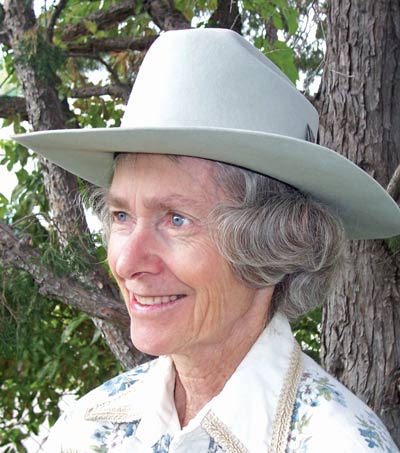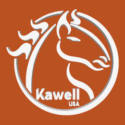Before beginning a new business arrangement with a novice horse owner, it’s important to communicate with them your criteria for a safe and suitable working environment.
“To get the best quality of work from your farrier, the farrier needs to be given the best possible conditions to work in,” says Placerville, Calif., farrier Marijke Ellert. “If I feel I’m unsafe—either because the horse is acting up or the area is dangerous to work in, I’m going to try to get in and out as fast as possible to reduce my chances of getting hurt. I’m more inclined to take my time and do my best job when my work area is clean and safe and the horse is standing still.”
Here are some considerations that you might wish to share with your new client.
Adequate Space
It’s vital to have enough room to work and help avoid accidents.
“Ideally, an area that’s 12 feet-by-18 feet is about the minimum I prefer,” Ellert says. “When I have the hind foot stretched out back, it’s nice to have room so I’m not falling off the edge of a mat or running into a wall if the horse changes position. I like an open space. If there are no walls it’s a lot safer and gives me an escape route if something goes bad.”
An ideal facility for Hurley, S.D., farrier Chris Richards would have crossties in an area where there are no restrictions in front or behind him.
“A 10-foot alleyway is nice because this gives me adequate room on either side of the horse,” he says. “I work out of the back of a pickup with a topper and a bed slide. I like to back up to the barn doors and pull my bed slide out, set my anvil and go to work — ideally within about 5 steps of my truck. This is where I am most efficient.”
Relaying to the client how important efficiency is to a farrier’s work is vital.
“You spend a lot of time walking in some barns,” Richards says. “You may be working halfway down the barn from your truck. You have to carry your anvil down there, along with your forge and everything else. Or you are walking a lot, or cold shoeing, which I don’t like to do. I want everything right there. I want my fans plugged in and be close to the truck.”
A narrow aisle not only isn’t safe for the farrier, but for the horse as well.
“The minimum I’d want to work in would be 6 to 8 feet,” says Dave Dawson, an Uxbridge, Ontario, farrier. “We have one aisle we work in that’s only 5 feet wide, and it is definitely not safe, but we do it because that’s all the barn has. Most of the horses are pretty good to work with, which helps.”
Clutter is another danger that should be brought to clients’ attention.
“Don’t set up a space for your farrier that has tack boxes and grooming bins, or saddles hanging nearby,” Burlington, Wis., farrier Kendra Skorstad advises clients. “It’s important to have a clear space so there is nothing to get hung up on or run into. If the only sheltered area is small, it needs to be uncluttered.”
Lighting
A well-lit area is a must, Dawson says. However conventional lighting isn’t always the best for a farrier. He suggests clients install lights on the side, rather than directly overhead. A center light in the ceiling creates shadows, making it difficult to properly evaluate the hoof.
Fluorescent lights above the work area aren’t too bad in summer when the doors are open, allowing airflow and a little natural light.
“In winter, when it’s 20 below and the wind is blowing, you want to shut that door,” he says. “It can be really dark inside those barns. It’s nice to have some lighting at a different angle.”
He has a couple clients who installed lighting along the walls in their wash rack.
“There are white backboard panels in the wash rack area, like in shower enclosures, with inlaid lights,” Richards explains. “Those are shining right on you as you work. I am not a huge fan of working in wash racks, because you have a wall to contend with.”
Fly Control
It’s crucial that new horse owners keep the barnyard, barn, stable or work area clean. Manure should be cleaned up, and old bedding and manure should be properly composted or hauled away so it doesn’t become a breeding site for houseflies and stable flies.
“Some people leave manure lying in the work area,” Richards says. “This attracts flies, and it’s not as nice to work where you or the horse is always stepping in manure. You’re not as efficient if you have to keep cleaning out the feet.”
It’s not only manure that flies are attracted to.
“In between horses I try to clean up all hoof trimmings, because flies love those,” Ellert explains. “I’ve seen the ground literally crawling with flies, attracted to pieces of hoofs and trimmings from the rasp. A clean space — without manure, debris, hoof material, etc. — is best.
“Flies also like moisture. If a horse has been bathed there, flies come to drink the water and lay eggs. Clean and dry helps minimize flies.”
Having a good fly spray is also important.
“Fly control in the work area and on the horse is crucial, so the horse isn’t bothered by flies when you are trying to work,” Richards advises clients. “When the horse is standing there stomping flies it can be dangerous.”
While many farriers carry their own fly spray, it’s critical that owners communicate their preferences.
“I carry my own fly spray, but sometimes a horse has allergies and is sensitive to certain sprays,” Ellert says. “You can’t just use the same spray on every horse. If the client’s horse has allergies, that client should provide the fly spray.”
Skorstad says some fly sprays only last a short time in protective effects, so she tells clients it’s best to wait until the farrier arrives and then spray the horse.
“Then we’ll get maximum protection and I’ll also know what you are using, in case it’s something that irritates my skin,” she says. “I recommend fly sheets or fly boots to my clients. If the horse has these on, leave them on. If I need to move the fly sheet a little to see what I need to see in the feet or the body, we’ll do that. But leave it on so the horse will be comfortable and not stomping at flies or trying to get a fly while I have a leg up.”
It’s important that new horse owners understand that it’s difficult and dangerous for the farrier when a horse is trying to take a hind foot away to kick a fly off its belly or shifting balance to reach around to bite at a fly.
“We use a lot of fly spray, like Piranha, and I think it’s the best, though there are a couple others that work well,” Richards says. “There are some, however, that won’t slow down these flies.”
Fans
Fans can be a blessing and a curse. Preferences vary greatly among farriers.
“I like and dislike fans,” Ellert says. “They are nice for air flow, but I don’t like the noise. The constant hum of a fan can cover the sound of my movement around the horse and it might startle when I suddenly touch it.
“Sometimes fans are a necessity if I’m in a section of the barn with no other air flow, like a wash rack. For my comfort and the horse, it helps in these situations to have a fan. No one wants hot, stagnant air. A fan also helps with flies.”
Tied Or Held
The owner may not discipline the horse or insist on good manners, and the horse may take advantage of the owner. A new owner may not understand how the horse needs to stand or be able to shift its weight for the farrier.
“The person holding the horse may not always recognize when the horse is pulling a hind foot away,” Eller explains. “At the head the horse may be fine, but back where I am, I am getting yanked around.”
Communicating the need for a safe work area is necessary not only for you, but the horse as well.
“I want to always make it a positive experience for the horse,” Skorstad says. “Nobody needs to get hurt, and I really don’t want the horse to have a bad experience. Hoof care doesn’t need to be difficult or fearful for the horse. I’ve worked with a lot of fearful horses, and I’ve found that it’s important to create a safe space so the horse can relax. Then the horse will be more willing for me to work on him the next time. This is the highest priority for me.”







